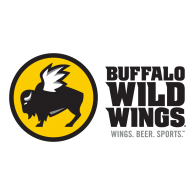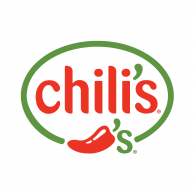Hooters Franchise in 2025: Costs, Fee & FDD
Curious about owning a Hooters franchise? Explore key insights on costs, earnings, and the iconic brand’s proven business model. Discover if this investment opportunity aligns with your goals in our detailed franchise analysis.
Table of Contents:
Hooters, founded in 1983 by six entrepreneurs in Clearwater, Florida, has become a distinctive player in the full-service restaurant industry. The founders, including Lynn D. Stewart and Ed Droste, envisioned a casual dining concept that combined sports, bar food, and a playful atmosphere. The first Hooters restaurant quickly gained attention for its unique approach, and today, it is synonymous with its famous chicken wings and the iconic “Hooters Girls” servers. The brand’s lighthearted and casual vibe helped it carve a niche that set it apart from traditional restaurants.
The core product at Hooters is its signature chicken wings, offered in a variety of styles and sauces, accompanied by an extensive menu that includes burgers, seafood, and salads. While the food is central, the Hooters Girls are a big part of the experience, adding a unique entertainment element. The restaurant primarily attracts sports fans, families, and casual diners looking for a lively atmosphere. Its core markets include sports enthusiasts and groups celebrating casual get-togethers.
Hooters has grown substantially over the years. The franchise boasts more than 400 locations across 29 countries, with a significant presence in North America, Asia, and Europe. Hooters serves millions of customers annually, especially on game days, thanks to its strong connection to sports culture. Its global footprint continues to expand, reflecting the enduring appeal of the brand.
As for franchisee support, Hooters offers a comprehensive training program that covers everything from operational procedures to customer service, ensuring franchisees can maintain the brand’s standards. Ongoing marketing strategies, operational guidance, and training for the Hooters Girls are also provided, making it easier for franchisees to integrate into the system. The brand’s focus on both product quality and the overall customer experience has kept it relevant in a highly competitive industry.

Hooters Franchise Insights
- Hooters serves over 30 million wings annually, making it one of the most popular menu items, especially during major sports events like the Super Bowl.
- The franchise operates in more than 29 countries, with over 400 locations worldwide, highlighting its strong international presence and brand recognition.
- With 292 total U.S. locations, Hooters has a strong presence, including 97 franchised units and 195 corporate-owned units.
- Hooters locations often see a significant boost in traffic during sporting events, as the brand has long been associated with sports and casual, fun dining.
Hooters Franchise Key indicators
Growth YOY (%)
-4%
vs industry 0%
Total U.S. Franchised Units
97
3-Year Failure Rate
16%
vs industry 10%
Sales-to-Investment ratio
1.3:1
How much does it cost to open a Hooters franchise?
Understanding the potential investment size and capital requirements is crucial when considering opening a Hooters franchise. These financial commitments, including initial franchise fees, equipment costs, and ongoing operational expenses, impact the feasibility and profitability of the venture. Thoroughly evaluating these factors ensures that potential franchisees are prepared for the financial responsibilities and can make informed decisions about their ability to sustain and grow the business, ultimately contributing to long-term success.
Min & Max Investment
Opening a Hooters franchise involves several key costs, which are outlined in Item 7 of the Franchise Disclosure Document (FDD). You can see a breakdown of the costs to open a Hooters below from the most recent Item 7 below:
| Type of Expenditure | Minimum Investment | Maximum Investment |
|---|---|---|
| Initial Franchise Fee | $50,000 | $50,000 |
| Liquor License | $300 | $10,000 |
| Leasehold Improvement, Architect, and Other Fees | $525,000 | $2,615,000 |
| Equipment, Furniture, Fixtures, Signage, Technology | $455,000 | $865,000 |
| Initial Inventory | $25,000 | $95,000 |
| Initial Labor and Training | $75,000 | $150,000 |
| Grand Opening Expenses | $10,000 | $50,000 |
| Insurance | $45,000 | $80,000 |
| Professional Fees, Licenses, Deposits, Prepaid Expenses | $8,000 | $25,000 |
| Additional Funds (3 months) | $40,000 | $135,000 |
| Total Estimated Initial Investment | $1,233,300 | $4,075,000 |
Item 7 in the Franchise Disclosure Document (FDD) is the “Estimated Initial Investment” section. It outlines the total costs a franchisee can expect to incur when starting a franchise, including the initial franchise fee, equipment, inventory, real estate, and other startup expenses. This section is crucial because it provides potential franchisees with a detailed understanding of the financial commitment required, helping them assess affordability and plan their investment strategy effectively.
Required Capital
To open a Hooters franchise, the required capital involves both the initial investment costs and a net worth requirement set by Hooters. Let’s take a closer look below:
- Initial Investment As shown above, the total estimated initial investment ranges from $1.2 million to $4 million. This includes all the startup costs such as the franchise fee, real estate, construction, equipment, initial inventory, and additional funds for initial operating expenses. Assuming that you will finance your franchise investment, you should plan to have 20% of the total investment amount in the form of equity (cash) for the investment.
- Required liquid assets Typically, for an investment of this size, liquid capital in the range of $500,000 to $1 million is expected. This allows for a cushion to cover initial expenses and cash flow needs.
- Net worth Franchisees are often required to have a minimum net worth of at least $2 million to $4 million, depending on the specific franchise and location. This ensures that the franchisee can secure financing and maintain operational stability.
How much does a Hooters franchise owner make?
Calculating the salary of a Hooters franchise owner involves analyzing gross sales to determine total revenue, assessing operational efficiency to understand profit margins, and accounting for franchisor fees and additional expenses such as rent, utilities, and payroll. Effective management of these factors can significantly impact the profitability and financial success of a Hooters franchise owner. This comprehensive financial analysis helps estimate net profits, from which the owner’s salary can be derived. A clear understanding of these factors ensures accurate salary projections and financial planning for sustainable business operations.
Hooters Revenue & Gross Sales
Based on most recent analysis, Hooters franchises have a median gross sales of $3,456,622. This strong financial performance underscores the brand’s robust consumer demand and potential for significant revenue generation.
Which key factors impact the average revenue performance of Hooters franchisees?
The performance of U.S. franchisee median gross sales for Hooters in recent years is likely influenced by several factors. One key factor is the ongoing recovery from the pandemic, as more customers returned to dine-in experiences, particularly for sports-related events, which are central to Hooters’ atmosphere. Additionally, inflation may have driven menu price increases, boosting gross sales despite potential declines in customer traffic. Hooters’ emphasis on expanding digital ordering and delivery services also likely contributed to sustaining revenue. Lastly, local economic conditions and competition from other casual dining chains would also impact individual franchise performance, depending on the region.
Hooters Franchise Operational Costs
When opening a Hooters franchise, key primary ongoing operational costs you should consider include:
- Labor Costs Employee wages, including management and the iconic Hooters Girls, will make up a significant portion of your expenses, especially in a full-service restaurant environment.
- Food and Beverage Costs Inventory management is crucial. As a restaurant, regular replenishment of food, beverages, and other supplies will be a constant cost, with fluctuations depending on supplier pricing and demand.
- Utilities and Maintenance Operating a full-service restaurant comes with substantial utility costs, such as electricity, water, and gas, as well as regular maintenance and upkeep for kitchen equipment, dining areas, and facilities.
- Lease or Mortgage Payments If the location is not owned, monthly lease payments will be a major ongoing cost. Even if owned, property taxes and maintenance are important to consider.
- Marketing and Local Advertising While national marketing is covered by the ad fund, you may need to invest in local promotions or sponsorships to drive foot traffic in your specific region.
Careful planning and budgeting for these operational costs are crucial for the financial health and success of your Hooters franchise.
Hooters Franchise Fees
When considering opening a Hooters franchise, you should be aware of several ongoing fees that are important to factor into your financial planning. These fees contribute to maintaining the franchise’s operations and marketing efforts.
- Continuing Royalty Fee 5% of gross sales, paid on a four-week accounting period, with renewing franchisees possibly seeing a range from 5% to 8%.
- National Ad Fund Fee Currently set at 2% of gross sales but may go up to 4%, also due every four weeks.
- Local Advertising Cooperative (“LAC”) Contribution While not currently established, if introduced, it could be up to 3% of gross sales depending on local area needs and agreements.
Additionally, there might be other fees introduced depending on local or national changes in franchise agreements or cooperative marketing efforts.
Hooters Franchise Earnings
Based on the most recent data, the median gross sales for a Hooters franchise is approximately $3,456,622. For an owner-operator, the estimated operating profit earnings are around $345,662 based on industry margins, giving a good indication of potential profitability. These figures provide insight into the earning potential of running a Hooters franchise, which can vary depending on location, operational efficiency, and customer traffic.
It’s important to keep in mind that, while these numbers represent averages, your individual results may differ based on factors such as local competition, management skills, and marketing efforts. Nonetheless, these figures suggest a solid revenue stream and a reasonable return for a well-managed franchise in a stable market.
How to Open a Hooters Franchise
Becoming a Hooters franchisee involves several key steps, starting from the initial inquiry to launching your restaurant operations:
- Initial Inquiry You or your franchise specialist submits an initial inquiry basic information about your interest and background. You should also conduct thorough research on the franchise, including seeing all of the information available on the Vetted Biz franchise intelligence platform, including access to the most recent Franchise Disclosure Document (FDD).
- Franchise Application Once the inquiry is reviewed, you’ll complete a formal franchise application that includes detailed information about your background, financial standing, and your desired location.
- Discovery Day Hooters may invite you to their headquarters or a local restaurant for Discovery Day, where you’ll meet the leadership team and learn more about the brand, operational systems, and expectations.
- Site Selection and Approval With the support of Hooters’ real estate team, you’ll identify potential locations. Hooters will assist in evaluating and approving your site based on traffic, demographics, and other factors.
- Franchise Agreement Once the site is approved, you’ll sign the franchise agreement and officially become a Hooters franchisee.
- Training Program Hooters offers a comprehensive training program that includes both in-classroom and on-site training, ensuring you understand operations, management, and customer service.
- Restaurant Build-Out During the training phase, construction or renovation of your restaurant begins, following Hooters’ design guidelines.
- Pre-Opening and Marketing As your restaurant nears completion, you’ll begin pre-opening preparations, including hiring staff, training them, and launching local marketing efforts to build excitement.
- Grand Opening Once everything is in place, you’ll host a grand opening, officially starting operations. Hooters will offer ongoing support to help you succeed in your new business.
Pros & Cons
Pros
Strong Brand Recognition: Hooters is an internationally recognized brand with a loyal customer base, particularly known for its sports-oriented atmosphere and signature wings.
Proven Business Model: With over 400 locations worldwide, Hooters has a well-established and scalable business model that has been successful in various markets.
High Revenue Potential: The average gross sales for a Hooters franchise are significant, with recent figures showing over $3.4 million annually, indicating strong revenue potential.
Cons
High Initial Investment: With a total investment ranging from $1.2 million to $4 million, the financial barrier to entry is steep compared to other franchises in the same industry.
Niche Appeal: The Hooters brand is built around a specific casual dining concept, which may not resonate in all markets or with all demographics, limiting its versatility.
Labor-Intensive Operations: As a full-service restaurant, managing staffing, including Hooters Girls, and maintaining a high level of customer service can be resource-intensive and time-consuming.





